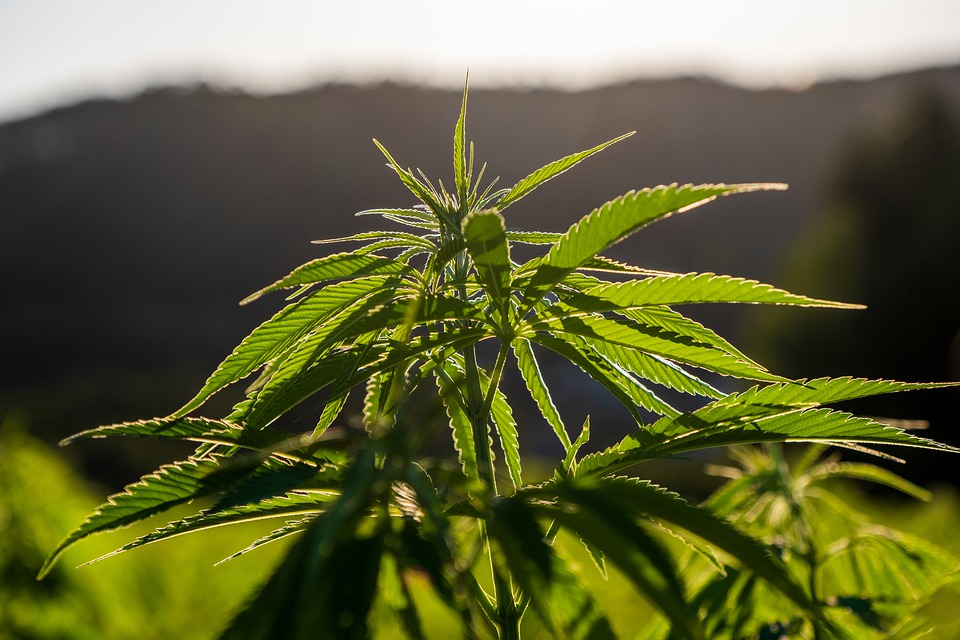Greenhouse Crops With Maximum Profit Growth Potential
 Back in the summer of 2013 I wrote an article titled What Can I Grow in a Greenhouse? The focus was to highlight some of the unique uses for greenhouses that we have encountered in our 35+ years of helping greenhouse growers grow their businesses. Many of the greenhouse products suggested back then still show promise for profitable growth today, and a few new ones have emerged.
Back in the summer of 2013 I wrote an article titled What Can I Grow in a Greenhouse? The focus was to highlight some of the unique uses for greenhouses that we have encountered in our 35+ years of helping greenhouse growers grow their businesses. Many of the greenhouse products suggested back then still show promise for profitable growth today, and a few new ones have emerged.
When looking for a profitable growth product one of the signals is increasing market demand. Considering the world population is an aging demographic, products that relate to health will likely continue to grow.
Medicinal herbs like: motherwort which is said to be good for heart conditions; spilanthes is considered an immune system stimulant; calendula, basil, feverfew, German chamomile, echinacea, and ginseng, are just a few of the healing herbs that fit the potential market demand.
Continuing on the topic of medicinal plants, marijuana is all the rage. With the US market currently sitting just under 3 billion dollars and estimates of growth to 5 billion by the end of 2016, it is no surprise that some greenhouse growers are looking to convert their greenhouses to this potentially lucrative crop. Marijuana is a cool crop so marijuana greenhouses require good ventilation, but odor control is also necessary for most marijuana production licenses.
Marijuana is not the only hot medicinal greenhouse plant. Several companies over the last few years have discovered that infusing plants with a virus shows great potential for producing vaccines. Typically a strain of tobacco plant is genetically modified instead of using animal protein. This is known as biosimilar plant production and is not only more cost effective, but also requires a lot less time to market than traditional vaccine production. Biosimilar plant production may require research style greenhouse facilities in order to meet the GMP requirements of the drug companies.
Two more trends in consumer health consumption are the “local food movement” and hydroponics. Greenhouses that are able to capitalize on “close to market” advertising have an opportunity to brand their greenhouse produce as a premium quality food for the health conscious consumer. Likewise hydroponic greenhouse growers are seeing increasing demand from shoppers. We work with the leading hydroponic production companies to provide greenhouses and greenhouse heating systems that maximize efficiencies.
Outside of the health market, immigration is exposing most markets to expanding diverse cultures and this is fueling niche market demands for all kinds of ethnic, and otherwise unique foods. Edible flowers provide vibrant colours to restaurant meal. Many Asian fruits and vegetables can thrive in a greenhouse.
In addition to a worldwide aging demographic, consider regional wealth profiles. Asia, and in particular, China is experiencing a tremendous rise in the middle class. As their buying power increases, so do opportunities for greenhouse producers.
According to the World Bank by 2030 fish farms will need to be able to produce close to two thirds of global fish consumption due to population growth and reduced levels of wild fish. Currently 38 percent of all fish produced in the world is exported, and by 2030 Asia is projected to account for 70% of the world demand for seafood products. By using the greenhouse climate to optimize the growing environment, we have seen aquiculture farms succeed. In North America greenhouse aquiculture typically raise tilapia, or arctic char in combination with a water plant like seaweed. In recent years greenhouse farmed aquiculture crops have also included shrimp, and increasing market demand for seafood could see opportunities for other aquiculture farming. For aquiculture the favorite greenhouse is a Widespan gutter connect greenhouse with tall under gutter heights. This enables good environmental control under a square footage that is capable of housing large production water tanks.
Biofuel is another area with increasing market demand. Algae can now be produced in a greenhouse and as advanced fuel research continues to measure and improve ways to replace fossil fuels, this is an area where specialty growers may thrive.
But the future market growth potential of a greenhouse crop is not the only factor in considering whether it could be profitable for you. More profitable crops for long-term growing typically have higher barriers to entry. Medicinal plants have significant regulations which require specialized growing environments, air filtration, and seed to sale traceability, etc. Quality and consistency are of primary importance so established suppliers will have an advantage as medical producers are going to be resistant to switching to an unknown supplier.
Marijuana currently has extremely high barriers to entry with most government bodies strictly controlling and limiting who gets a license to grow. In Uruguay there are only 5 marijuana cultivation licenses being awarded, in Minnesota it was just two.
When strategically examining crop options you also need to consider your team’s strengths and weaknesses and make sure that you pick crops which complement your organization. Can you easily import knowledge through consultants or new hires where needed? Does the new crop have synergies with your existing product mix, or does it make sense to have an entirely different business venture.
Of course this article is just scratching the surface of possibilities for commercial greenhouses today. If you have experience with any creative greenhouse crops or other uses we would love to read them in the comments below!
Source: http://www.worldbank.org/en/news/press-release/2014/02/05/fish-farms-global-food-fish-supply-2030







